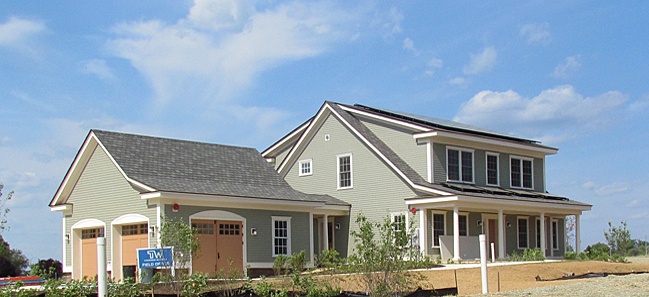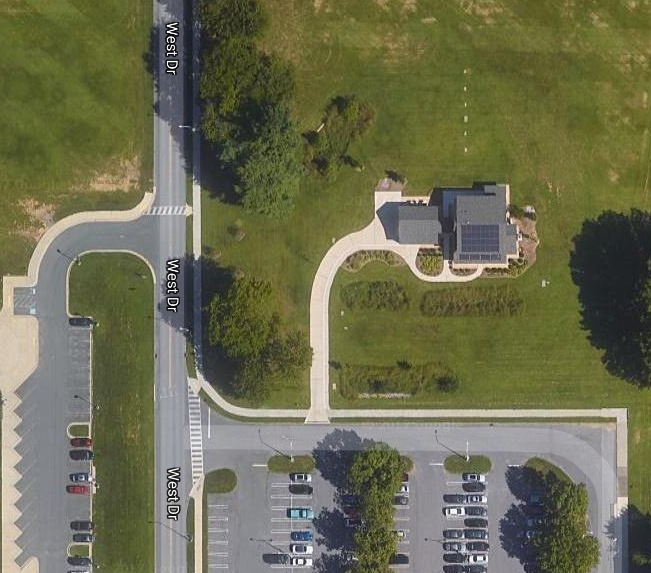Another model energy-saving project ignores density and location
The National Institute of Standards and Technology has built what it calls a model “net-zero” energy home on its Gaithersburg, Maryland campus. The house is festooned with arrays of solar cells that generate more electricity that the house consumes, and its extensively insulated, air-tight and high-efficiency windows.
This is great stuff. But still, we have a problem. Calling this house “net zero” leaves out a big part of its energy use–transportation.

The home is a 2,700 square foot single family structure with what looks like a three-car garage. The home is quite a bit larger than the average home–and heating and cooling a large amount of space requires more energy than a smaller space. Also, because it’s a single family building (and one located on a large lot), it doesn’t share common walls with other homes, which also tends to increase heating and cooling costs. And while the building is technically net-zero, because it generates more energy than it consumes, that energy isn’t free: between the added efficiency features and the solar cells, NIST estimates the structure costs about $120,000 more than a standard home.
It’s a bit misleading to call any structure “net zero” without looking at its impact on transportation, because driving is a major source of energy use (and carbon emissions). And as we’ve pointed out in the case of the 1,800 space parking garage for the the National Renewable Energy Laboratory in Golden Colorado, looking at just the structure’s energy budget, without looking at the transportation costs built in to its location, significantly understates its energy consumption, environmental impact and affordability.
Location matters
NIST has built its Net Zero demonstration home on its campus in Gaithersburg, and as an image from Google Maps makes clear, its a classic large lot suburban home.

Not only that, but Gaithersburg (a suburb of Washington DC) is a very automobile dependent city. According to Walk Score, Gaithersburg’s overall walkability rates 49 on a scale of 100 points making it “car-dependent.” The Gaithersburg area has some neighborhoods and apartment complexes that are considerably more walkable, but single family houses (like the net zero house) tend to be isolated from common destinations.

Figuring out how to build homes that use less energy is an important way to reduce greenhouse gas emissions. But how big those homes are, and where they’re located is in many ways at least as important as what technologies they use. Perhaps NIST’s next demonstration project can be a zero-net energy apartment building located in an urban neighborhood with a Walk Score of 95 or more, and easy access to transit.
